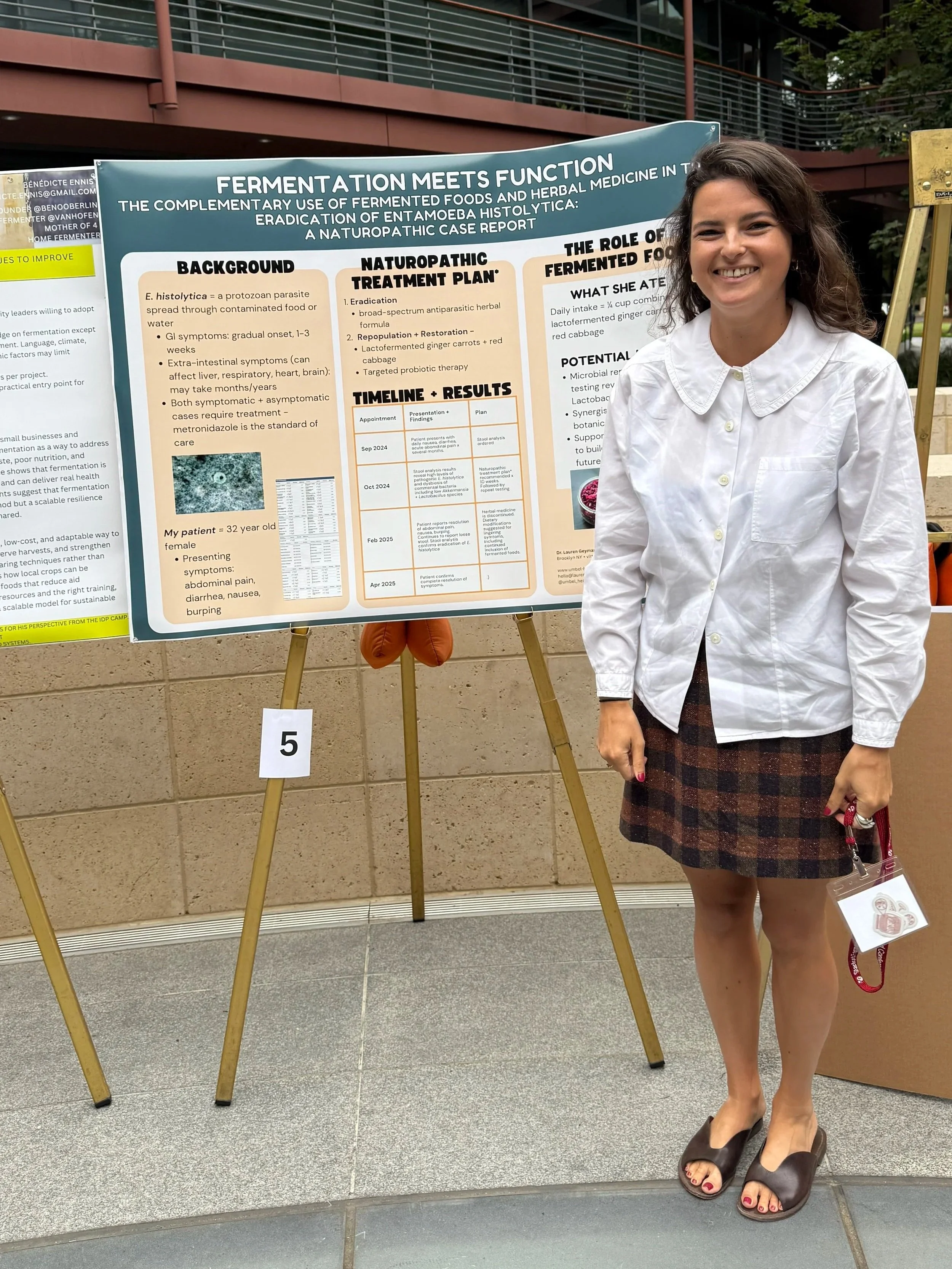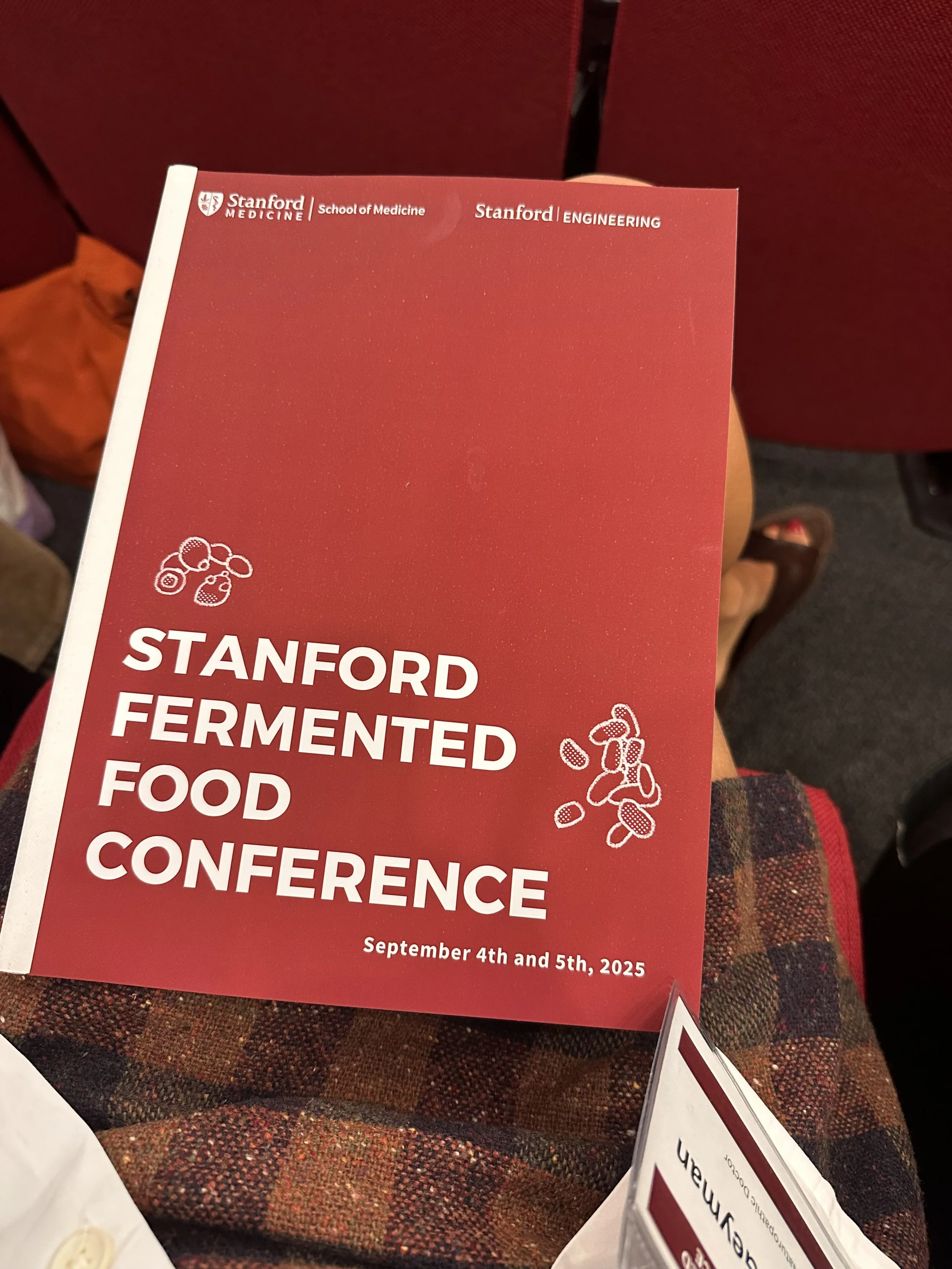Stanford Fermented Food Conference
Happy September! I am feeling extremely lucky to have attended the inaugural Fermented Food Conference at Stanford earlier this month. There was a consensus among attendees that it was the best conference we’d ever been to - it was incredible to be among a group of academics, chefs, food scientists, gut microbiologists, practitioners, formulators ~~ fermenters of all types, in every sense.
Speakers shared stories of their archaeologic digs to understand ancient DNA, to fermenting food waste to create a zero waste restaurant, to the importance of design in creating flavor, to the laboratory science of gut microbiology, and so much more -- it’s clear that those actively engaged in discovering best understand how little we know (but are so completely moved by the opportunity in this).
I presented a case report for the first time - on the successful eradication of a gut pathogen with herbal medicine and fermented food!! - but really my thesis is this: a dynamic approach to health (of an individual, community, landscape, planet) is the only way forward. As a naturopath, I see clearly that we live, as our host David Zilber put it to us, in a “post-pasteurian” world. Just killing off what we consider ‘bad’ is as much lazy medicine as it is bad policy— life is a multitude of terrains to be fed, nurtured, and enjoyed. That’s where health comes from.
What a relief to let your mind (and your gut) feel free!
On a more practical note, more on what I learned that you can use FOR HEALTH, below.
Practical tools for incorporating more health-benefiting fermented foods into your diet: resources + takeaways from the labs at Stanford
Fermented and Fiber- Rich Food Study, also called the Fe Fi Fo study :)
This study was conducted by the Sonnenburg Lab at Stanford, and compared intake of fiber to fermented food on inflammatory markers in the gut microbiome. Not surprisingly, both were extremely beneficial! Surprising to me, fermented food actually did more for us than fiber. Inflammation is a major driver of chronic disease and supporting gut diversity is, in my opinion, non-negotiable in our industrialized world.
Practical Takeaway:
Aim for 3-6 servings of fermented food per day. Some people have trouble tolerating fermented foods (I see and work with this all the time in sessions) so start slow and work your way up to your body’s tolerance. Here are some examples:
1/4 to 1/2 cup of fermented vegetables (sauerkraut, kimchi, curtido, carrots, beets, etc)
1-2 spears of pickles (naturally brined, NOT just in vinegar)
1/2 - 1 cup plain yogurt or cultured plant-based yogurt
1/2 - 1 cup kefir
4-8 oz kombucha (look out for added sugar)
1 tablespoon miso paste'
1 tablespoon fermented vinegar (like ACV “with mother”)
1-2 oz aged cheese
1 tablespoon soy sauce or tamari
1 slice naturally leavened, whole grain sourdough bread
1 piece injera
1-2 pieces dosa or idli
2 tablespoons Labneh
1/2 cup Kvass
1/2 cup -1 cup Tepache
In the midst of hard science and kitchen experiments, I felt grateful for registered dietician Dalia Perelman, who’s lecture was titled Challenges in Translating Fermented Food Science to the Marketplace. Marketing and green-washing has made shopping for healthy food increasingly difficult. While it is fun and beautiful to ferment your own food (I’m currently trying to ferment cucumbers into dill pickles on my countertop), it is not everyone’s interest and likely most of us will be purchasing some of the ferments we eat. Being an informed and mindful consumer becomes really important here. She shared this incredible chart to help us understand what on the food label actually MEANS it’s fermented food (hint: the word probiotic is not always it).
Find this chart and a lot of other great resources here: https://med.stanford.edu/nutrition/education/Resources/Fermenting-the-Facts.html
Finally, a sign I spotted at Bell’s Books in Palo Alto. Applicable to health advice too.




